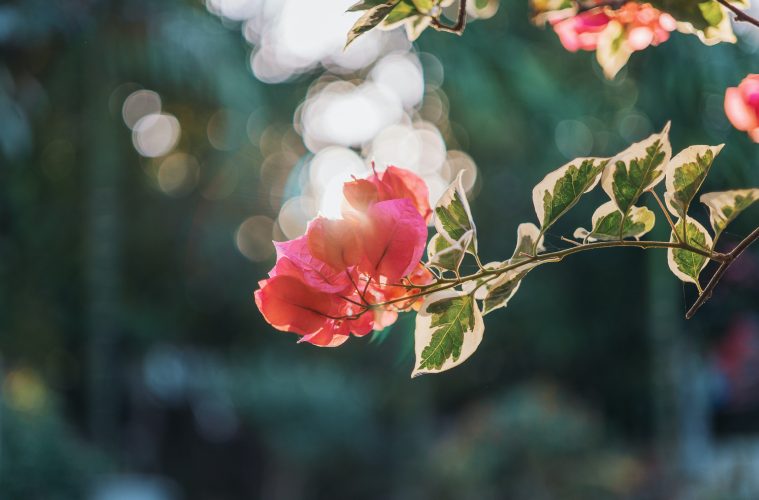The new generation bougainvilleas are more compact to fit into smaller gardens and into containers. They have been dubbed ‘boutique bougainvilleas’ by growers, aptly describing their new look. The colours for some of the new hybrids are also bright and beautiful. Check out just a few:
- ‘California Gold’ has sunshine yellow bracts throughout summer.
- ‘Fire Opal’ is a stunning deep orange that would make a blazing hanging basket display.
- ‘Golden Doubloon’ has burnt orange double bracts that fade to pink in an upright form perfect for pots.
- ‘Topaz Gold’ has unique mustard yellow with bright yellow bits on a medium-sized shrub.
- ‘Funkyvillas’ are also a new range with varieties called ‘Carnival’ with its bright pink and dark pink double blooms; ‘Donya Bella’ in a cerise that is super bright; and ‘Passion’ in a sultry pink and red variation.
To choose a new hybrid bougainvillea, go for the colours you love and what will grow best in your garden. Some have double flowers and some are even two-toned for a bit more variety.
Before you begin to plant one of these beauties, remember the following tips specifically for bougainvilleas and you will see results every time:
- Don’t forget all bougainvilleas are vines or climbing shrubs and have thorns, so handle with care.
- They need at least 6 hours of sunlight a day, preferably on a north-facing wall. Bougainvilleas without a good amount of light will forfeit flowers over greenery and the colour is what makes them special.
- They prefer not to have their roots disturbed so try and carefully cut the plastic away from the plant when planting rather than pull it out of the nursery bag. Try and move it around as little as possible.
- For container planting, choose big pots with good drainage holes and a layer of drainage material at the base like stones. Use a good potting soil with added compost, bonemeal for root development and a few handfuls of perlite or vermiculite to aid further with drainage.
- Bougainvilleas can be planted to trail downwards in the case of hanging baskets or upwards, but then they need a framework to climb. This should be installed at the planting stage so as to not disturb the roots later on.
- Keep the plants well-watered until new growth appears and then only water when the soil feels dry. They are very drought-resistant once established but still do better with regular watering.
- Feed in spring, summer and autumn with a potassium-rich fertiliser and add a layer of fresh compost at this time as a mulch. Don’t over-feed or you will get only leaves and not flowers.
- Prune annually to keep their shape right after they have flowered. They only bloom on new growth, so this is important. You can pinch back the growing tips of new plants to make them bushier.
Written by Susanna Parker
Featured image: Fox via Pexels


